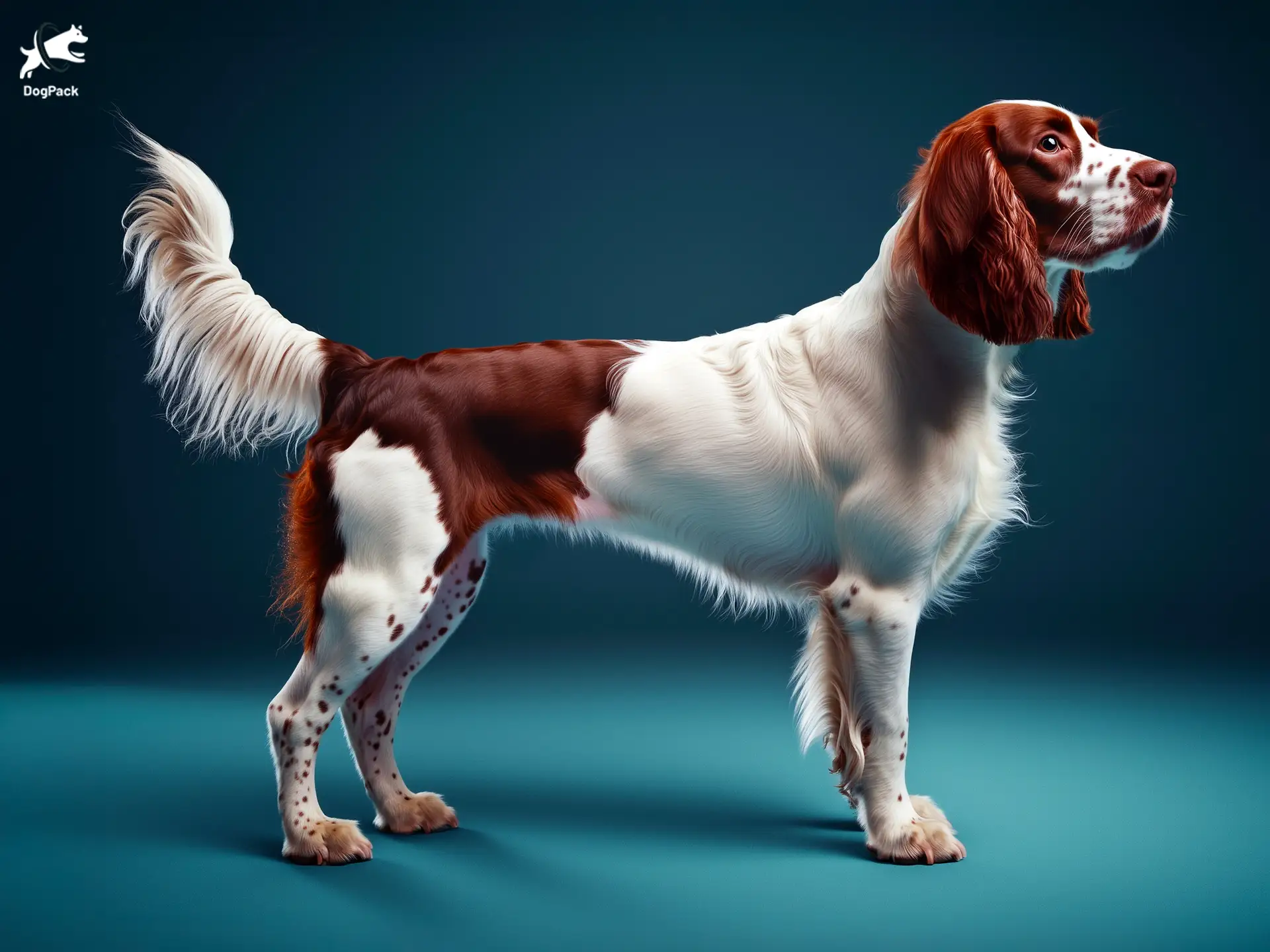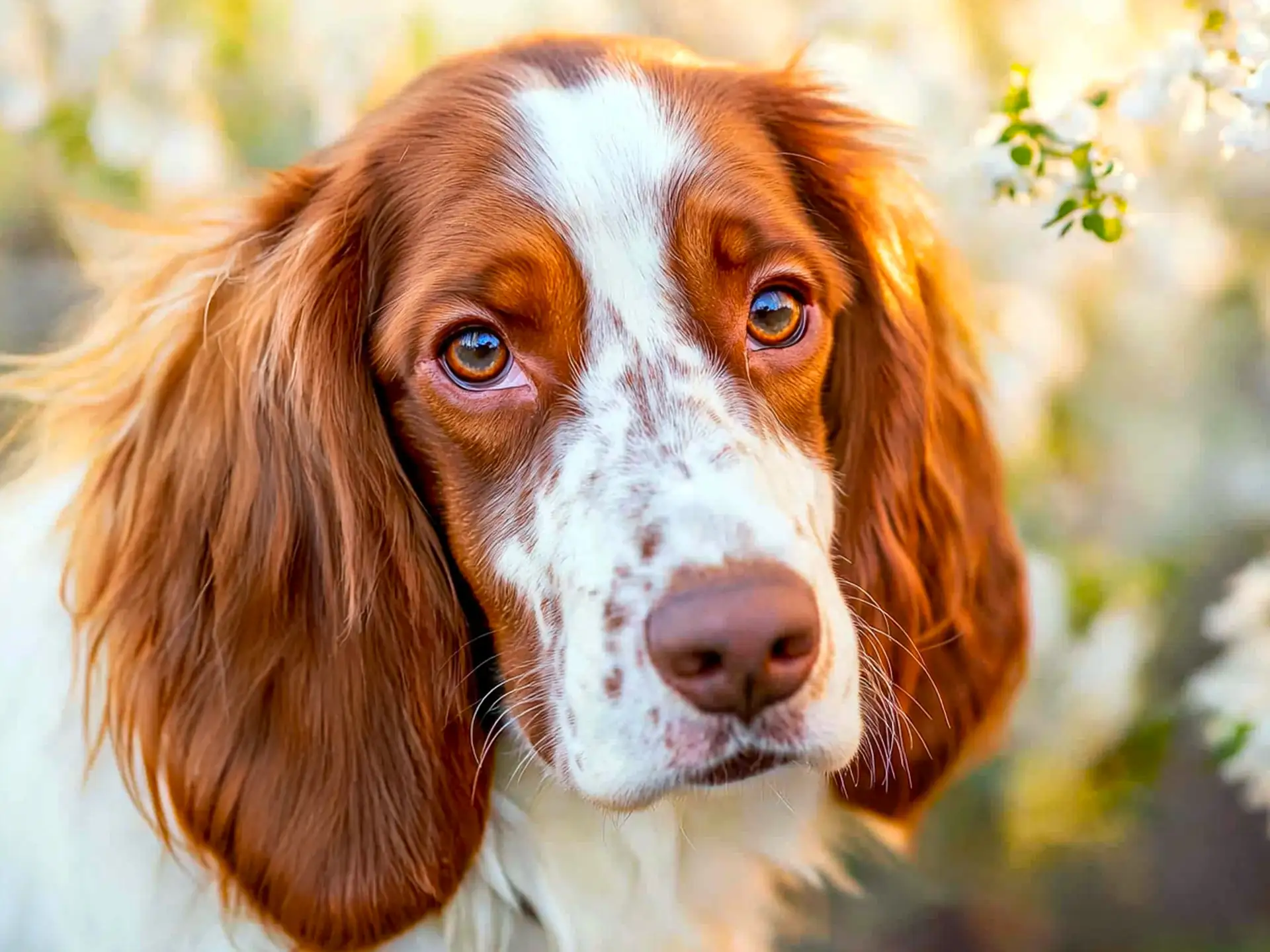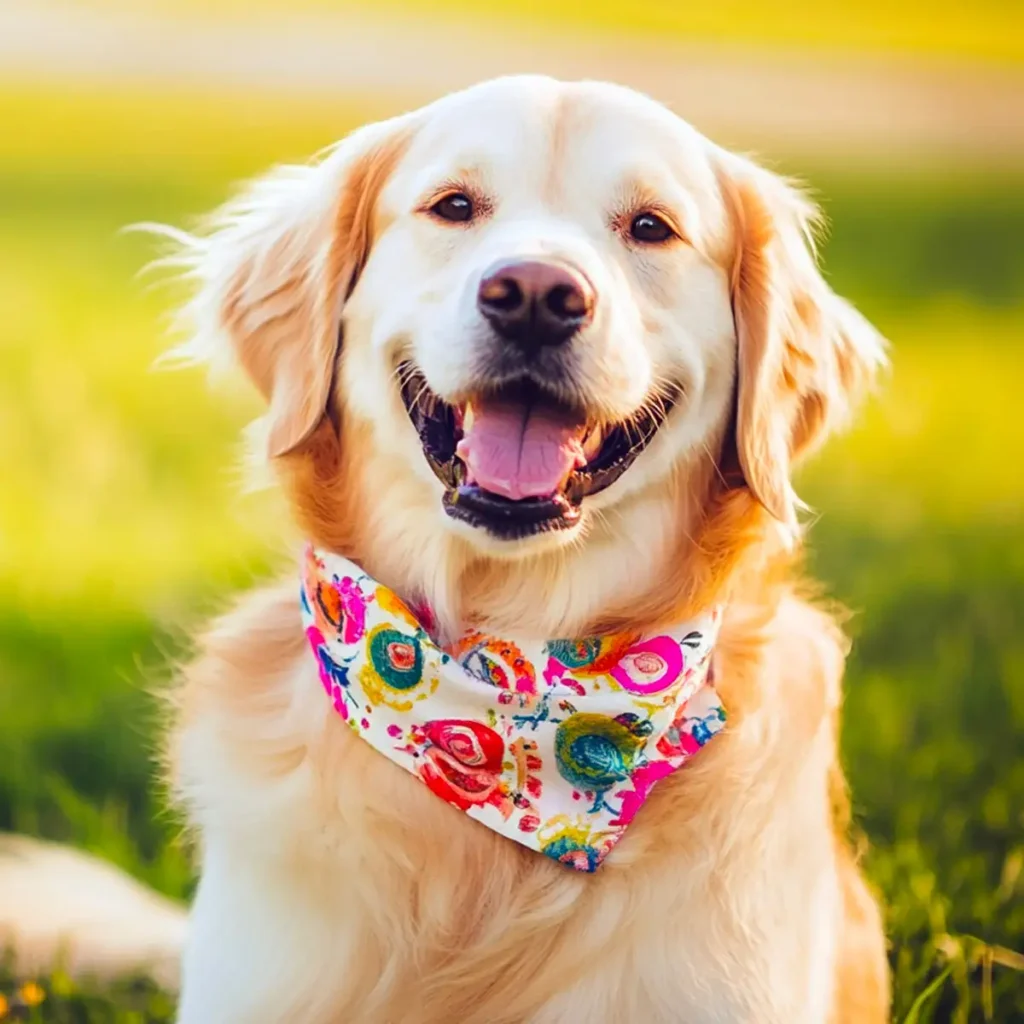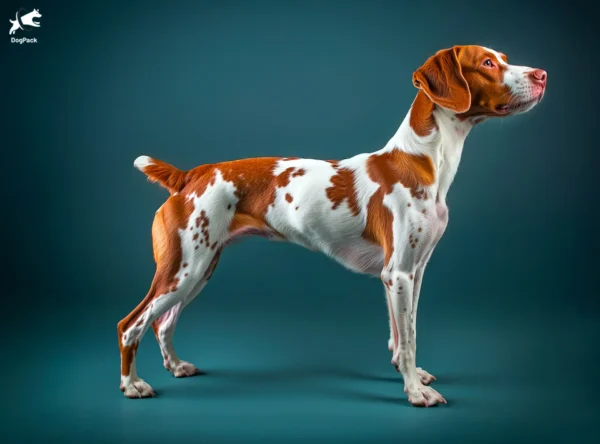Welsh Springer Spaniel Dog Breed Info & Overview
Known for their striking red-and-white coat and affectionate spirit, the Welsh Springer Spaniel brings unwavering loyalty to those who welcome them into their homes. Originally bred as a gundog, they excel at both fieldwork and family life. These medium-sized canines thrive on companionship, making them an ideal partner for active individuals or households.
Characteristics
Pictures
Breed History
Tracing back centuries, these spirited gundogs are believed to share ancestry with other British spaniels. Once known simply as the ‘Welsh Spaniel,’ they accompanied hunters through rugged terrain in Wales. Their primary job was to spring game from thick brush, an ability that contributed to their official recognition in the early 1900s by kennel clubs around the globe.
Bred for stamina and agility, these canines developed a dependable hunting style that set them apart from their English counterparts. Their smaller frame and keen nose suited them perfectly for flushing birds in tight spaces. Over time, breeders refined their gentle nature, ensuring they could serve as both diligent workmates and loyal companions in homes around the world.
Today, the Welsh Springer Spaniel retains its remarkable versatility. While cherished for field trials and hunting pursuits, many enthusiasts celebrate their affectionate demeanor as a prime household companion. Their centuries-old heritage remains woven into their modern identity, merging a love for outdoor adventures with a knack for endearing family moments—a testament to their enduring appeal.
Temperament, Personality
Bursting with energy, these dogs greet each morning with a wagging tail and a readiness for fun. They form deep bonds with their families, often following favorite people from room to room. Early socialization helps them remain confident around strangers, ensuring they keep a friendly, if slightly reserved, demeanor when meeting new faces.
A strong desire to please drives these spaniels to be attentive and eager learners. They thrive on positive interactions, absorbing commands swiftly when rewarded with praise or treats. Overall, they’re known to display a gentle patience, making them suitable playmates for children who understand how to interact respectfully with dogs.
For those seeking a loyal companion, the Welsh Springer Spaniel rarely disappoints. Their natural amiability extends to other pets, though supervision is key if smaller critters are involved. Their curious nature can lead to playful chases, but with proper guidance, these dogs usually coexist happily alongside their four-legged housemates.
Physical Characteristics
Sturdy yet graceful, these spaniels present a symmetrical build perfect for endurance in the field. Their broad head and velvety ears frame a kind, expressive face, making them instantly recognizable in any canine crowd. Dark, oval eyes reflect their keen intelligence and unwavering attentiveness, hinting at the breed’s readiness for action.
The coat exhibits a signature red-and-white pattern, typically with flowing feathering along the ears, chest, and legs. A water-resistant texture aids them in foul weather, a nod to their sporting heritage. Brushing a few times a week helps maintain their sleek appearance, though some families adore the slight ‘rustic’ look that emerges between grooming sessions.
Despite their medium frame, the Welsh Springer Spaniel carries enough muscle for sustained physical activity. Balanced proportions give them a fluid gait, allowing them to traverse uneven terrain with ease. Whether bounding through tall grass or trotting alongside on a neighborhood walk, they exhibit a poised and athletic bearing that reflects generations of selective breeding.
Health Issues
Like many purebred dogs, these spaniels can be prone to specific genetic conditions. Hip dysplasia occasionally appears, leading to discomfort or mobility limitations if not addressed early. Regular veterinary check-ups and screening can identify early signs, allowing for timely intervention to maintain a pain-free life. Responsible breeding practices also help reduce the frequency of inherited joint issues.
Eye health is another priority, with some dogs experiencing hereditary cataracts or glaucoma. Periodic eye examinations by a specialist can catch these conditions in their early stages, preventing further complications. For owners, simple checks such as looking for redness, cloudiness, or irritation around the eyes can signal the need for professional evaluation.
The Welsh Springer Spaniel generally enjoys robust health when given balanced nutrition and consistent exercise. Routine dental care is vital, as periodontal problems can emerge without regular cleaning. Additionally, monitoring their ears for signs of infection—like unusual odor or discharge—helps maintain overall well-being, ensuring they remain active and lively throughout their lifespan.
Grooming Needs
Regular brushing keeps their silky coat looking sleek and minimizes tangles, especially around the feathered areas. A wide-tooth comb or slicker brush proves handy in gently working through any knots. Scheduled grooming sessions, roughly once every six to eight weeks, can help trim excess hair and maintain the ideal shape for both function and aesthetics.
Ears require special attention, as their floppy nature can trap moisture and debris, leading to possible infections. Gently cleaning the ear canals with a veterinarian-approved solution helps remove buildup. Keeping the ear fur neatly trimmed around the opening ensures better air circulation, reducing the risk of bacteria or yeast thriving in those warm, dark crevices.
For the Welsh Springer Spaniel, a moderate bathing schedule is sufficient. Over-bathing can strip their coat of essential oils, so monthly or bi-monthly baths often suffice unless they’ve been particularly adventurous in the mud. A gentle dog shampoo preserves their natural shine, while consistent nail trims and dental care round out a thorough grooming routine.
Exercise Requirements
Robust and always up for action, these dogs flourish with daily opportunities to stretch their legs. Activities like brisk walks, fetch, or even canine sports such as agility can keep them both physically and mentally engaged. Without proper outlets for their energy, they may resort to mischievous behaviors like digging or excessive barking.
Puzzle toys or nose work games tap into their natural instincts and can help keep boredom at bay on rainy days. Field trials and hunt tests, if available, allow them to showcase their inherent talents in a controlled setting. Incorporating variety into an exercise routine not only maintains overall fitness but nurtures their playful curiosity.
The Welsh Springer Spaniel thrives with an hour or more of activity per day, although more energetic types might enjoy closer to two. Enthusiastic swimming, an occasional hike, or a spirited romp in a fenced yard all go a long way toward satisfying their boundless vitality. Consistency is key: a tired dog is a happy dog.
Training Tips
Swift to pick up new commands, these spaniels respond best to firm but gentle guidance. Harsh methods can dampen their enthusiasm, potentially leading to confusion or anxiety. Short, focused training sessions help keep them engaged, especially when reinforced with tasty treats or effusive praise. Patience and positivity often go further than repetition alone.
Obedience classes offer a structured environment that can sharpen their social skills, even if they have a naturally amiable disposition. Meeting a variety of dogs and people fosters well-rounded confidence, reducing the chances of timid or overly boisterous behavior. Consistency among family members—using the same cues and rewards—maintains clarity and helps them progress quickly.
For the Welsh Springer Spaniel, mental stimulation is as crucial as physical exercise. Incorporating puzzle-based tasks, retrieving games, or even advanced scent work can keep them intellectually engaged. Teaching fun tricks like rolling over or carrying small objects encourages a deeper bond, proving that training can be both productive and entertaining.
Nutrition, Diet
Welsh Springer Spaniels generally maintain a healthy physique on a high-quality diet that provides around 25% protein and 15% fat. Most adults flourish on approximately 2 to 2.5 cups of kibble daily, split into two meals, adjusted for activity level. Look for formulas specifically tailored to medium-sized sporting breeds with balanced calcium and phosphorus ratios.
Because they possess a lively disposition, choosing a diet enriched with Omega-3 fatty acids can support joint health and keep coats glossy. Supplements like glucosamine or chondroitin, when recommended by a vet, may benefit older individuals showing early signs of joint wear. Careful portion control is vital to prevent weight gain that could stress hips and elbows.
If a Welsh Springer Spaniel participates in frequent field trials or hunting excursions, slightly increasing daily calories might be necessary. Adding cooked lean meats or nutrient-dense toppers can provide an extra energy boost during peak activity. However, it’s crucial to monitor body condition: visible ribs or a distended waistline can indicate the need for dietary adjustments.
Adoption, Breeders
Established breed clubs often maintain lists of approved breeders who prioritize health testing and ethical practices. Before committing, inquire about certifications for hips, eyes, and other relevant screenings. Meeting at least one parent can provide insight into potential temperament. Reputable breeders encourage prospective owners to ask questions and will offer lifelong support for any concerns.
For those considering rescue, organizations dedicated to Welsh Springer Spaniels occasionally have adult dogs awaiting new homes. Shelters or specialized programs ensure they’re properly evaluated and placed in fitting environments. Welsh Springer Spaniel Club of America maintains resources on breed-specific rescues, while Petfinder can help locate available dogs nationwide. Patience often rewards adopters with a devoted companion.
Connecting with fellow enthusiasts through online forums or social media groups can offer real-world advice on raising a Welsh Springer Spaniel. These communities frequently share tips about reputable breeders, upcoming litters, and rescue successes. Whether adopting or purchasing a puppy, investing time in research and reliable contacts lays the groundwork for a harmonious, long-term relationship.
Family Pet?
Households that enjoy staying active will likely find these spaniels an ideal addition. They pair a friendly demeanor with an adventurous spirit, ensuring there’s rarely a dull moment. Consistent routines—like morning walks or weekend hikes—help integrate them into family life. Children can benefit from a watchful adult’s guidance to ensure respectful, safe interactions.
Given their tendency to form strong attachments, they won’t appreciate long stretches alone. Left to entertain themselves, they might pick up habits like incessant barking or chewing on furniture. Providing engaging toys, puzzle feeders, and occasional crate breaks can alleviate boredom, especially during work hours or brief errands away from home.
For families that can devote time to play, training, and shared activities, the Welsh Springer Spaniel typically becomes a beloved household fixture. Their warm disposition and eagerness to engage make them a hit with children and adults alike. With proper exercise, supervision, and consistent affection, they thrive as loyal family members.
Right For You?
Prospective owners should assess whether their lifestyle accommodates a dog that craves regular outings and mental stimulation. If you prefer a more laid-back companion or can’t consistently provide outdoor adventures, this might not be the perfect match. On the other hand, those who relish active hobbies—like hiking, running, or dog sports—could be an excellent fit.
In addition to time, budget considerations factor into responsible ownership. Costs for quality food, professional grooming sessions, and regular vet check-ups can add up. While they generally enjoy good health, potential hereditary issues underscore the importance of comprehensive insurance or a dedicated savings fund. Evaluating these commitments beforehand can ensure a stress-free, long-term partnership.
Those prepared to offer ample exercise, structured training, and a loving home environment will likely form a deep bond with a Welsh Springer Spaniel. Their devotion, combined with a sprightly demeanor, creates a joyous atmosphere that energizes every household. Ultimately, matching their needs to your daily rhythm is key to fostering a rewarding companionship.
Conclusion
From their roots as tenacious gundogs to their role as treasured family companions, this breed’s adaptability remains a standout trait. They offer a harmonious blend of energy, tenderness, and unwavering loyalty, thriving in homes that embrace an active routine. Whether scampering across fields or curling up at your feet, these dogs flourish when treated as true family members.
Because they crave both physical challenges and human interaction, scheduling plenty of exercise, training, and together time is crucial. If you’re seeking a spirited partner who repays devotion with endless affection, the Welsh Springer Spaniel may be the perfect canine counterpart. With proper care and respect, they become unforgettable companions that leave a lasting paw print on your heart.
FAQs
-
Why do Welsh Springer Spaniels have a “velcro dog” personality?
Welsh Springer Spaniels form exceptionally strong bonds with their owners, often following them from room to room. This behavior stems from their history as loyal hunting companions, making them more attached and eager to stay close to their family.
-
Do Welsh Springer Spaniels have a different scenting ability than other spaniels?
Yes, Welsh Springer Spaniels have an exceptional nose, often excelling in scent work and tracking. Their ability to detect faint smells over long distances is a result of their selective breeding for bird hunting in rugged Welsh landscapes.
-
Why do Welsh Springer Spaniels have a unique “red and white” coat pattern?
The breed’s distinct red and white coat is a natural camouflage for working in the Welsh countryside. The red markings help them blend into autumn foliage, while the white patches make them visible to hunters in the field.
-
Are Welsh Springer Spaniels prone to “spring fever”?
Many owners notice a seasonal energy spike in Welsh Springer Spaniels, especially in spring. This is due to their natural instincts kicking in when wildlife becomes more active, making them more eager to explore and engage in high-energy play.
-
Why do Welsh Springer Spaniels use their paws so much?
Welsh Springer Spaniels have an expressive and tactile nature, often using their paws to grab toys, nudge their owners, or dig. This behavior traces back to their history as water retrievers, where they relied on strong, webbed feet for swimming and navigating marshy terrain.
Breed Ratings
Quick to learn, they excel in obedience but sometimes display a touch of stubbornness that requires consistent guidance.
Bouncy and eager, they love interactive games and family fun, ensuring there’s seldom a dull moment in the household.
High-octane canines that flourish with ample exercise and lively outings to channel their boundless enthusiasm.
Moderate shedding that’s more noticeable during seasonal coat changes, but manageable with routine brushing and proper coat care.
Initially bred to flush game, they retain a strong instinct to chase. Early training helps curb impulsive pursuits of smaller animals.
Regular brushing prevents matting, especially with feathering. While not overly complex, they do need periodic trimming to stay neat.
Generally responsive and eager, but can become distracted if bored. Firm, positive reinforcement keeps lessons engaging and productive.
Develops strong attachments and dislikes long separations. May become anxious or destructive without regular human interaction.
Typically moderate, but can escalate when they’re bored or seeking attention. Adequate exercise curbs excessive vocal displays.
Not especially drooly, but slight drool can appear after rigorous play or mealtime. Overall, they’re relatively neat around the mouth.
Usually sociable and polite with other canines, especially when introduced early. Proper socialization ensures smoother interactions.
Generally robust, though predisposed to certain eye and joint issues. Regular vet checks and responsible breeding help maintain well-being.














